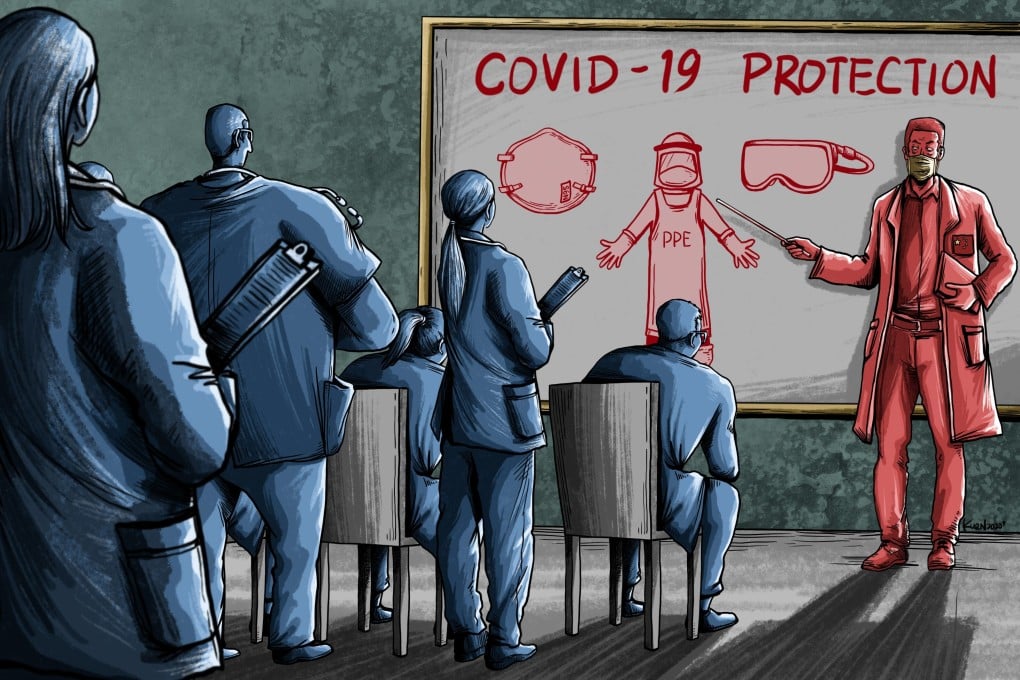How the Wuhan experience could help coronavirus battle in US and Europe
- Protocols developed at the pandemic’s first hotspot could guide health care workers in the US and Europe as they struggle with the same issues
- An infectious disease specialist who set up safe zones in Wuhan’s hospitals shares what he learned on the front line

As supplies dwindled, medical staff resorted to wearing rubbish bags on the wards, recycling masks by disinfecting them with UV radiation, and keeping their protective suits on as they slept in their hospital’s isolation areas, not knowing if there would be more when they had to go back to work.
Dr Jiang Rongmeng, an infectious disease specialist from Beijing’s Ditan Hospital, saw first-hand how doctors on the front line fought the highly contagious Covid-19, hampered by these shortages in the early stage of the outbreak before plentiful supplies became available.
In New York state – the hardest hit in the US – the health department last week warned hospitals to prepare for a lack of PPE, acknowledging that doctors and nurses would have to work without it. Health care workers are unsure how to disinfect their N95 masks, which are meant to be disposable.
“None of the tests available to ensure sterilisation are meant for N95 masks,” said Benhur Lee, a professor of microbiology at the Icahn School of Medicine at Mount Sinai in New York.
